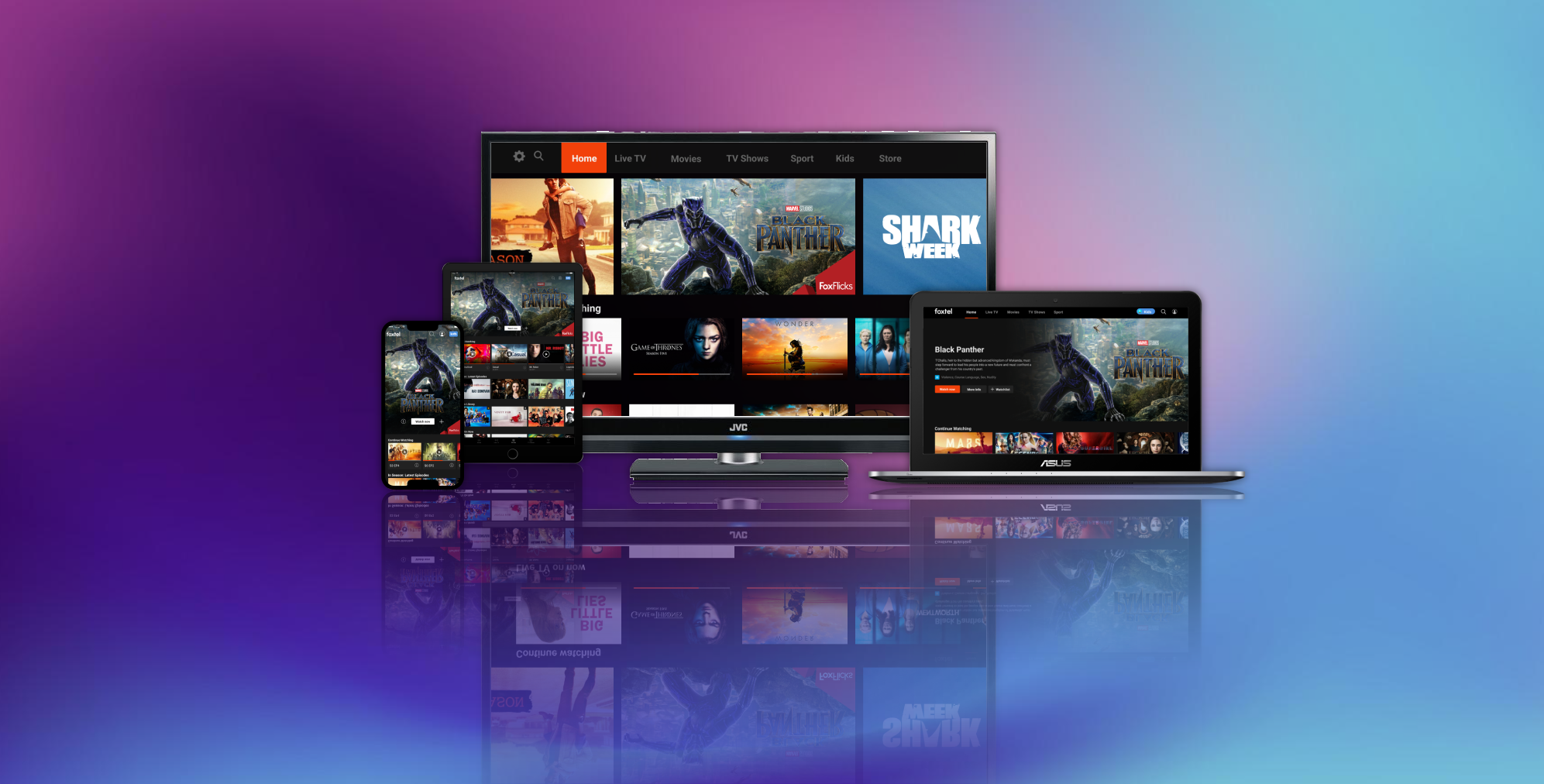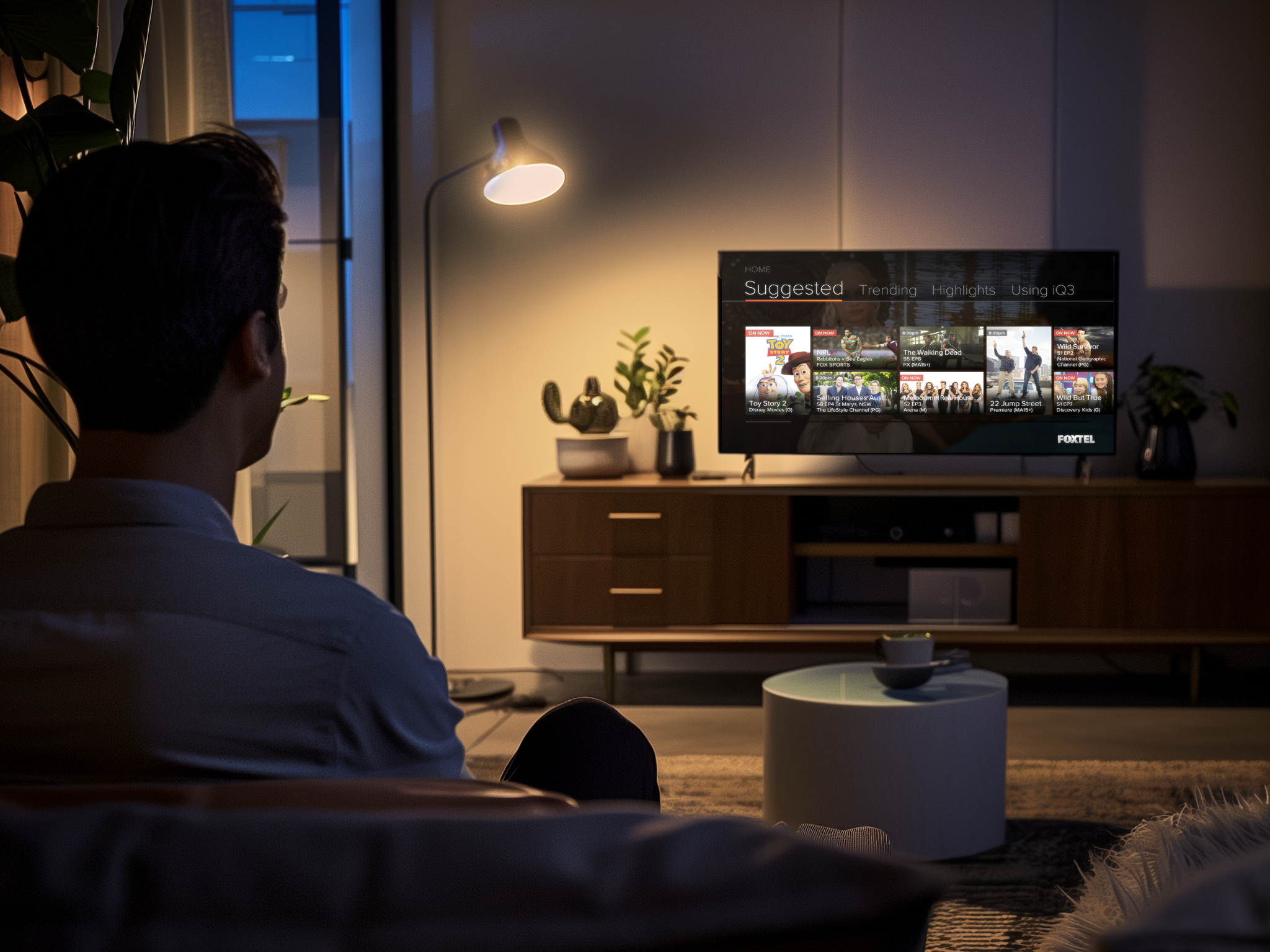
Foxtel iQ5
Creating the iQ5, which became the pinnacle of broadcast and streaming platforms in Australia.
Executive Summary
This project aims to design a world-class user interface (UI) for the iQ5 that not only addresses the shortcomings of its predecessors (iQ3 and iQ4) but also leverages the latest advancements in technology to enhance user experience. The new UI will provide seamless access to Foxtel’s extensive content library, support ultra-high-definition streaming, and integrate a variety of streaming apps. This initiative will ultimately drive customer satisfaction, increase user engagement, and open up new market opportunities for Foxtel.
Our problem statement
How might we address the pain points identified in the iQ3 and iQ4 interfaces to deliver a superior and frustration-free experience in the iQ5?
How might we enhance personalization options in the iQ5 UI to better cater to individual user preferences and viewing habits?
How might we support high-definition content, including 4K Ultra High Definition streaming, within the iQ5 UI to meet the demands of modern viewers?
How might we create an intuitive and engaging user journey in the iQ5 UI that encourages exploration and interaction with Foxtel’s extensive content library?
How might we seamlessly integrate multiple streaming services into the iQ5 UI, ensuring a cohesive and user-friendly experience?
My role
As the Lead UX Designer for the iQ5 project, I was tasked to redefine the user experience for Foxtel's next-generation set-top box. To achieve this, we implemented a continuous feedback loop of research and insights to design a world-class user interface that not only addresses the limitations of previous models but also leverages the latest technological advancements.
Research and analysis
In home contextual inquiry was done as part of the discovery
Research and anaysis
User research was conducted to identify usability issues with our current iQ3 user interface and insights informed design changes in the design of the new iQ5 user interface.
Research methods consisted of different techniques, contextual inquiry, customer interviews, surveys and analysis of existing customer experience data
Over 30 participants were interviewed
Planning and Ideation
During the early stages of the iQ5 project, the UX and product teams conducted collaborative brainstorming sessions with key stakeholders, including senior leaders from content, technology, and customer experience departments. These sessions were crucial for exploring the feasibility, viability, and desirability of potential features and functionalities for the new set-top box.
Requirements for each feature were meticulously defined and prioritized to align with the project’s goals and user needs, setting the stage for UX sprints focused on design and development.
To ensure a strategic approach to feature implementation, we utilized the RICE framework (Reach, Impact, Confidence, and Effort) to prioritize features. This methodical approach facilitated a phased rollout, allowing us to address the most critical aspects first and iteratively improve based on user feedback and testing.
Stakeholders from various departments, including content, marketing, development, and customer support, were actively involved in quarterly planning sessions, where their insights and feedback helped refine the project’s direction and ensure a cohesive strategy.
Design and Deployment
For the iQ5 project, we adopted a structured approach using two-week sprints to develop and refine the user interface. Each sprint began with an Epic Brief and detailed Requirements to guide our initiatives. Initially, we documented these in Confluence for enhanced collaboration and accessibility.
As the Senior UX designer I and my team translated the requirements into wireframes and prototypes, focusing on core user flows for stakeholder reviews and more detailed flows for customer testing. Depending on the feature, customers interacted with either wireframe prototypes or high-fidelity visual prototypes developed using Principle. We utilized Figma UX and Prototyping.
We used Sketch and Figma for Visual Design, creating an component design system that served as the foundation for the iQ5’s user interface.
We facilitated tech review sessions to maintain close collaboration and alignment between Product (including Business Analysis, Visual Design, and UX) and Tech teams. As the tech teams completed tickets, the product team conducted reviews ensuring the smooth development of features.
This iterative design and deployment process ensured that the iQ5 UI was not only visually appealing and user-friendly but also technically robust and ready to meet the high standards expected by Foxtel’s customers.
Implementation
The implementation of the iQ5 involved extensive work on both the frontend and backend systems. As development tickets transitioned into QA review.
Operationally, the product team provided support to various departments such as Marketing, Product Copy, Content Posters, and Customer Help Documents. We collaborated with the operations team to define standard operating procedures, ensuring smooth product operation from launch day.
As the iQ5 launched, we worked closely with the Customer Experience (CX) team to establish a process for ingesting customer feedback and surfacing relevant data for decision-making. We designed dashboards in Tableu to visually monitor product performance in real-time across all supported devices.
A full component and pattern library was created for this project

Deployment
The iQ design was deployed onto Mobile (iOS and Android), Tablet, Web browser and Television
Results
The iQ5 streaming box saw a significant uptake, with a notable increase in Foxtel subscriptions and a reduction in customer churn.
The iQ5 enabled users to stream content seamlessly, resulting in higher customer satisfaction and engagement metrics.
20pp increase in NPS
12pp churn improvement
4% increase in ARPU
The power consumption of the iQ5 is approximately 15% less than the previous iQ4 model, contributing to a significant reduction in the carbon footprint.
Foxtel achieved its goal of offering a world-class entertainment experience, with customers praising the enhanced user interface and overall performance.
Conclusion
The iQ5 project presented an exciting opportunity to innovate and elevate Foxtel’s product offerings. As the Lead UX Designer, I played a pivotal role in developing a cutting-edge user interface that met and exceeded customer expectations. Building the iQ5 from the ground up was a significant challenge, but the results speak for themselves. The iQ5 has set a new standard for streaming devices, and its success lays a strong foundation for Foxtel’s future innovations in the entertainment industry.
TV just got easier
Looking for something to watch? Foxtel offers one solution with entertainment you love, all in one place. Enjoy a new favourite from Foxtel with live sport, world class dramas, and blockbuster movies alongside Netflix, Prime Video, Disney+~, and more all within one interface.








